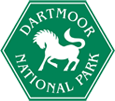Meldon Geology and Geomorphology case study
The Meldon area is situated on the north-west corner of Dartmoor granite massif, south-west of the town of Okehampton and is one of the most important geological locations in the UK. It demonstrates, par-excellence, the effects of contact metamorphism and mineralisation associated with the intrusion of a major granitic body, but is also famous for its structural geological features, including the well-known ‘Meldon Anticline’ - a southwards inclined antiform dating from the late Carboniferous Variscan Orogeny. A range of other geological and geomorphological features are also well developed.
1C. Greystone Nappe: Lower Carboniferous, Lower Culm Group (‘allochthon’)
1D. Blackdown Nappe: Late Lower to Upper Carboniferous, Bealsmill Formation (‘allochthon’)
1E. The Dartmoor granite and associated igneous rocks
1F. Metalliferous mineralisation
1G. General tectonic evolution and structural geology
